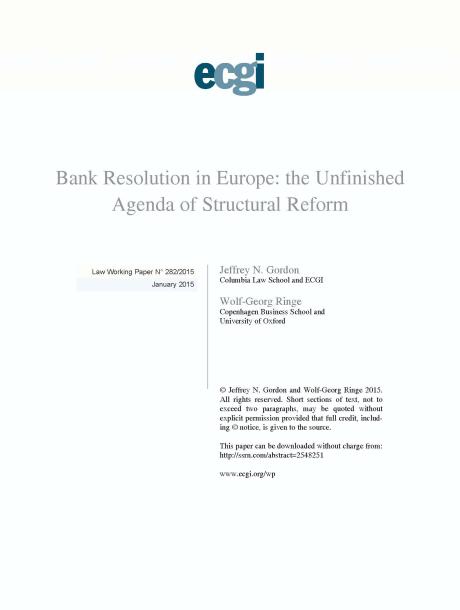
Bank Resolution in Europe: the Unfinished Agenda of Structural Reform
Abstract
This chapter argues that the work of the European Banking Union remains incomplete in one important respect, the structural re-organization of large European financial firms that would make ?resolution? of a systemically important financial firm a credible alternative to bail-out or some other sort of taxpayer assistance. A holding company structure in which the public parent holds unsecured term debt sufficient to cover losses at an operating financial subsidiary would facilitate a ?Single Point of Entry? resolution procedure that would minimize knock-on effects from the failure of a systemically important financial institution. Resolution through such a structure would minimize run risk from short term creditors and minimize destructive ring-fencing by national regulators. Although structural reform in the EU could be achieved by supervisory implementation of the ?living wills? requirement for effective resolution or irresistible incentives through capital charges, it would be best obtained through addition to the EU?s Proposed Structural Measures Regulation now under consideration.








